The 5 key benefits of interior plantscaping
Natural air purification
Reduction of ambient noise
Enhanced wellbeing and productivity
Attractive workplace with improved privacy
Better temperature regulation
Types of interior Plantscaping
There are various ways to implement interior plantscaping that contribute not only to aesthetics, but also to a healthy and calming environment. Indoor plants improve air quality and create a natural, inviting atmosphere.

Where can interior plantscaping be applied?
Interior plantscaping can enhance the atmosphere and wellbeing in a wide range of settings. Whether in workplaces or public institutions, adding greenery to indoor spaces offers numerous benefits. Interior plantscaping is ideal for:
- Offices
- Shops, showrooms, and malls
- Hotels, restaurants, and cafés
- Residential homes
- Airports
- Wellness and fitness centers
- Schools and universities
- Healthcare facilities

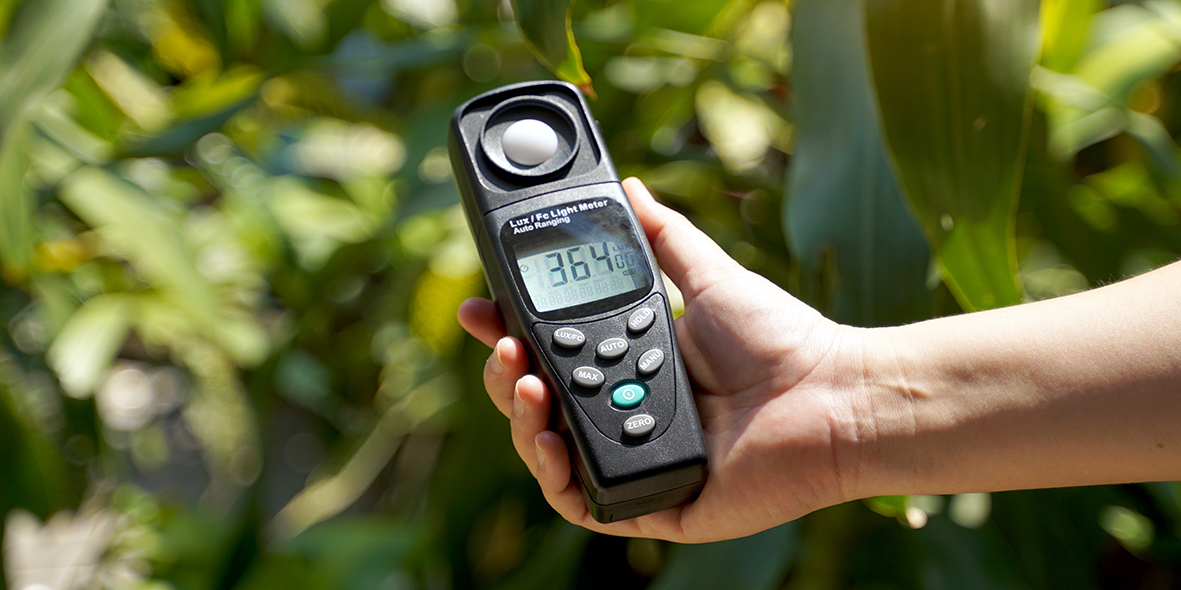
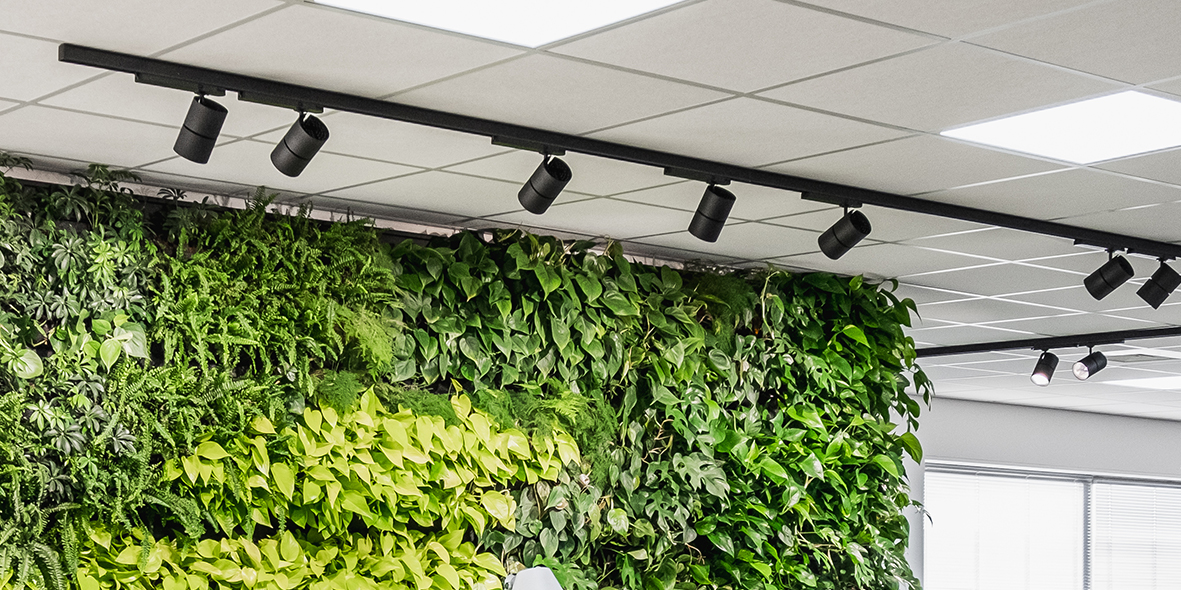
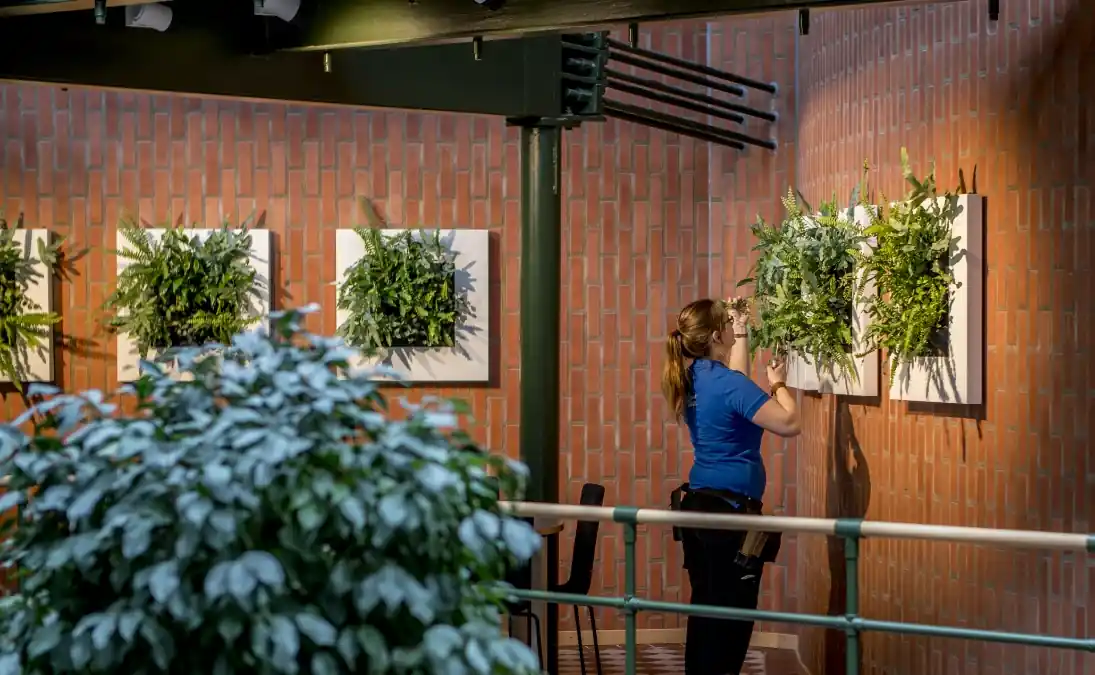
The importance of light for interior plantscaping
Light is essential for plant health and growth, as it powers photosynthesis—the process plants use to generate energy. In interior plantscaping, the amount and quality of light determines which plant types are suitable for a given space.
Some species, such as Monstera and Spathiphyllum, thrive in low-light conditions, while others like Ficus and Areca palm require more daylight. For optimal growth, most indoor plants need at least 500–1,000 lux. If natural light is insufficient, specialized grow lights can be used to provide the necessary light levels. These lamps simulate daylight and ensure plant vitality even in spaces without direct sunlight.
Discuss the possibilities with a Mobilane specialist
Contact us
By submitting this request, I agree to the privacy policy.
An easy process
We start with a non-binding consultation
Budget, planning, and quotation
Planting and preparation
Installation and completion
Smart greenery in small spaces
In compact spaces, making the most of available room is essential. Vertical planting options such as living walls, green wall art, or hanging pots allow greenery to be added without taking up floor space. Green room dividers are another flexible solution to subtly separate spaces while maintaining an open and spacious feel

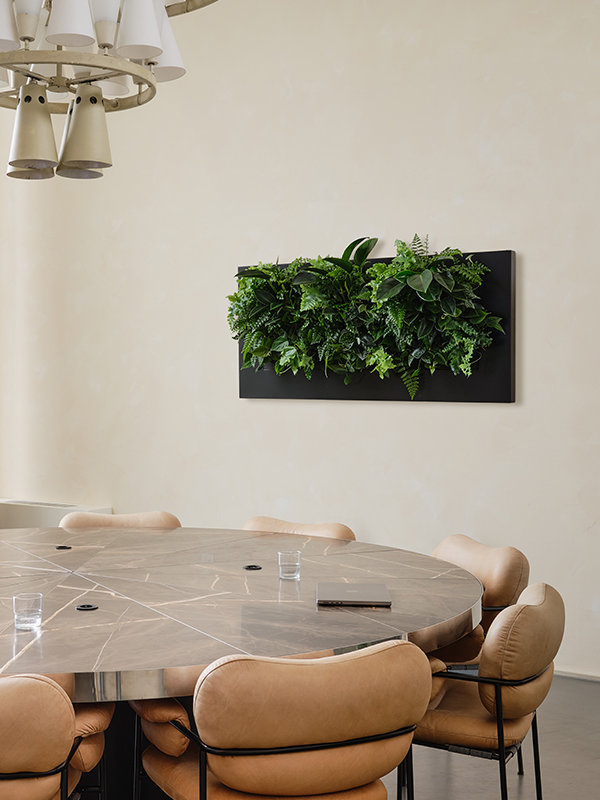
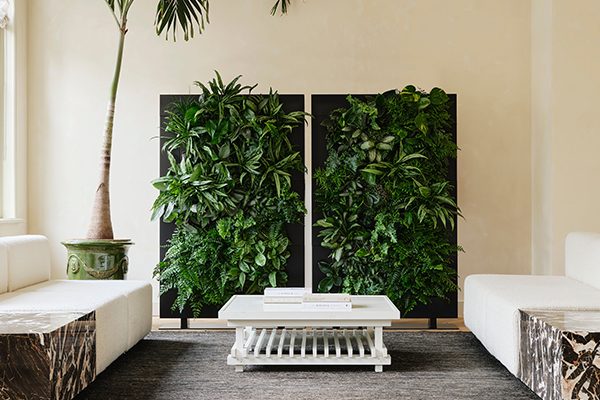
Sustainability & Certifications
Interior plantscaping, such as living walls, plays an important role in achieving sustainability and wellbeing certifications like BREEAM, WELL, and LEED. These certifications evaluate buildings based on factors such as energy efficiency, air quality, and the creation of a healthy working environment. Living walls contribute by improving air quality, regulating humidity, and reducing stress—key elements within the WELL certification.
They also support BREEAM and LEED criteria by promoting biodiversity, using sustainable materials, and reducing a building’s ecological footprint. As a result, living walls offer not only visual appeal, but also strategic value for creating sustainable and healthy buildings.

Discuss the possibilities with a Mobilane specialist
Contact us
By submitting this request, I agree to the privacy policy.
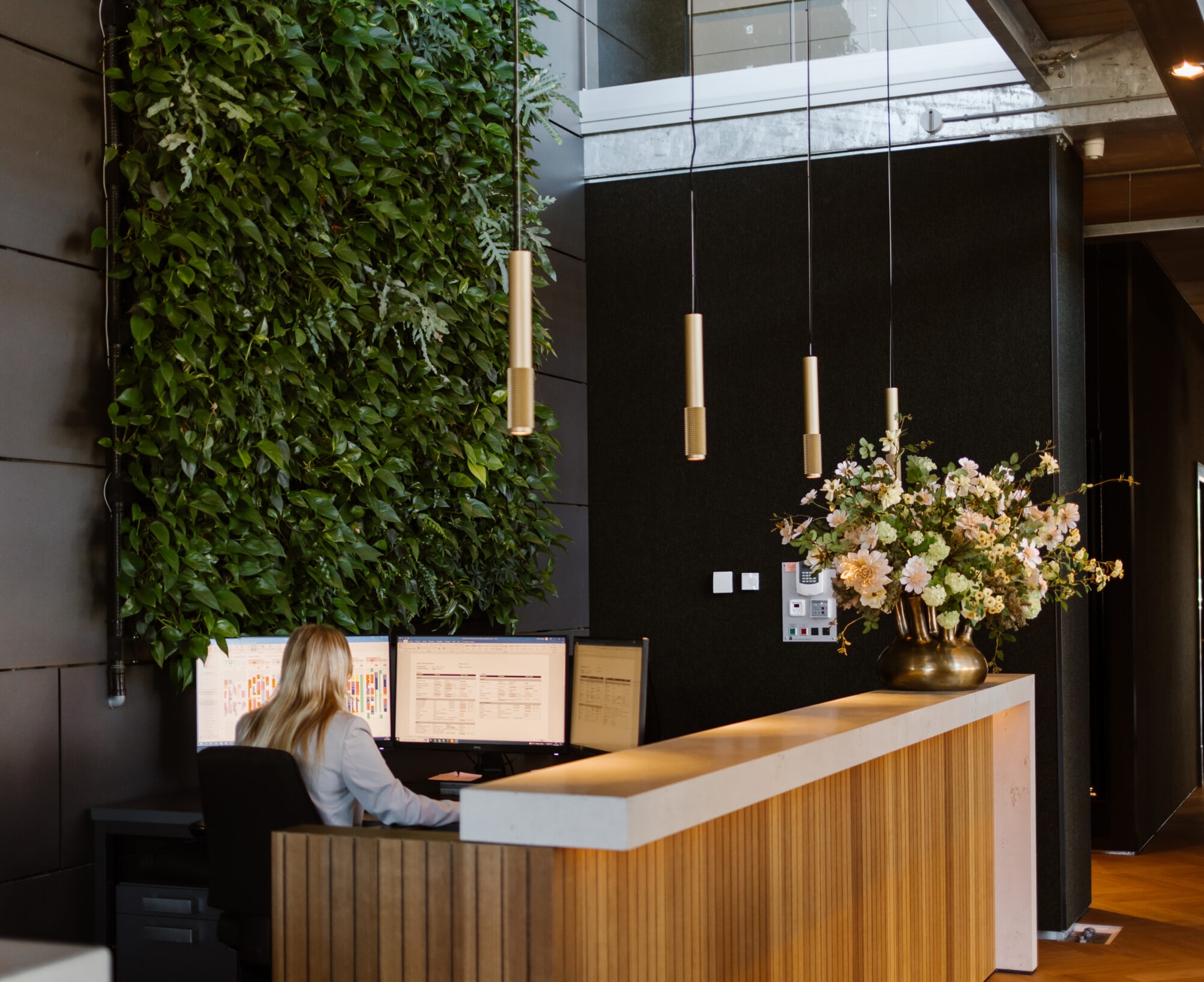
Biophilic design: integrating nature into interior design
Biophilic design is a design approach that focuses on strengthening the connection between people and nature within built environments. This concept taps into our innate need to connect with nature and recognises the positive impact of greenery, natural materials, and organic forms on our wellbeing. Indoor plants are essential to biophilic design; they reduce stress, enhance productivity, and stimulate creativity. Moreover, they foster a sense of calm and connection to nature—even in urban settings where greenery is often limited.
Read more about biophilic design
5 Proven benefits of plants in the workplace
Wageningen Environmental Research, Fytagoras, IVN, and several companies conducted a study on the effects of plants on indoor climate, employee health, and workplace wellbeing. The research revealed positive outcomes linked to the presence of plants in work environments. In general, humidity levels were higher, there were fewer complaints about dry air, and employees reported an increased sense of privacy and a more attractive workplace.
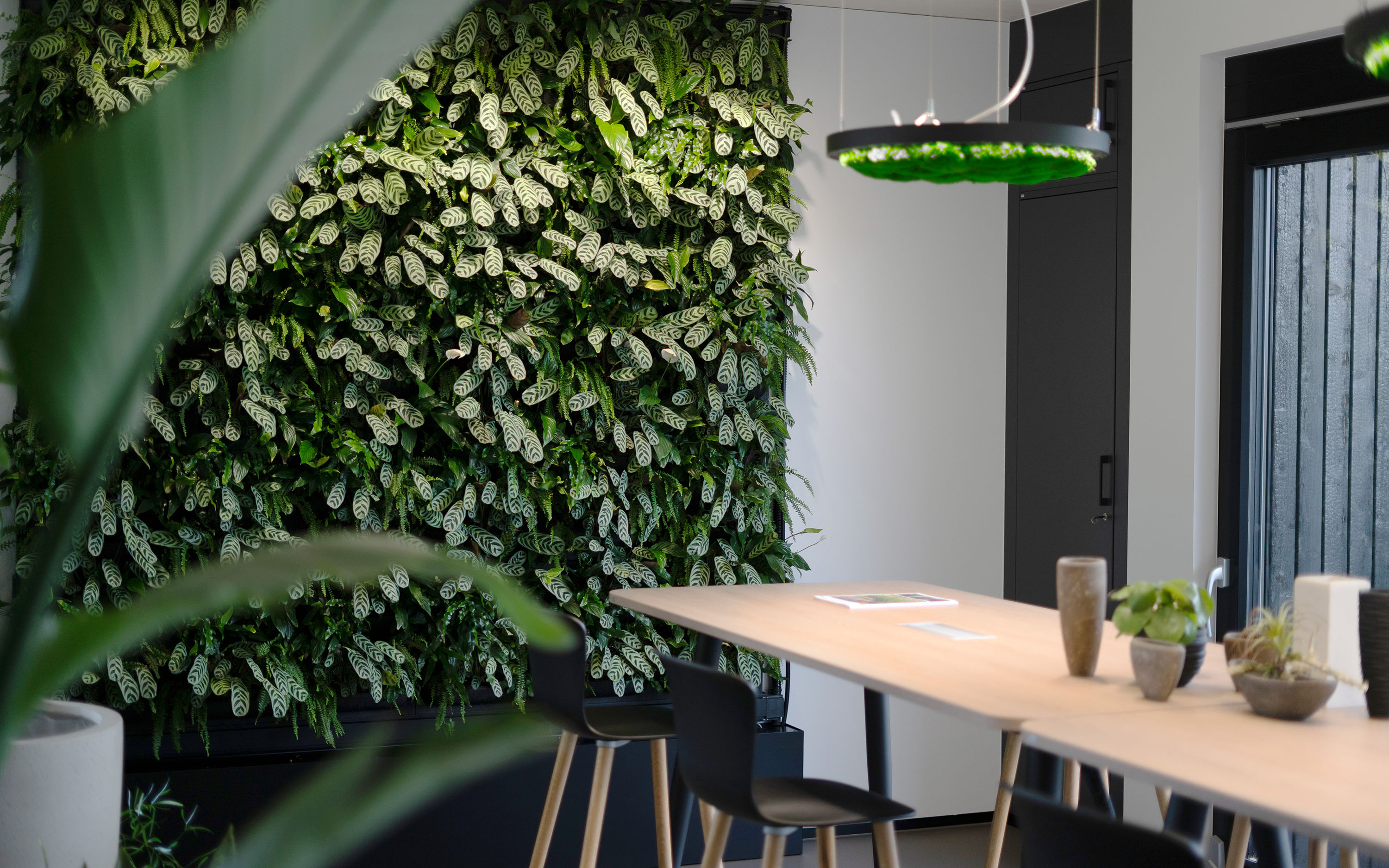
Frequently Asked Questions
All Frequently Asked QuestionsPlants improve air quality, boost productivity, and reduce stress. They contribute to a healthy and aesthetic environment by producing oxygen and filtering harmful substances. In addition, they create a natural, calming atmosphere that enhances overall wellbeing.
Plants offer numerous benefits: they improve air quality, increase productivity, reduce stress, and add a pleasant look and feel to any space.
Depending on the chosen type of interior plantscaping, various plant species can be used. The Mobilane PlantGuide provides a detailed overview.
Interior plantscaping requires regular maintenance to stay healthy and visually appealing. This includes watering, pruning, fertilising, and pest control. It is strongly recommended to work with a professional interior plantscaping company, equipped with the right expertise and tools for proper care. Maintenance is usually carried out on a fixed schedule—typically monthly—to ensure optimal plant growth and lasting visual quality.
The cost of interior plantscaping depends on various factors, such as the type of installation, the size and species of the plants, and installation expenses. Maintenance frequency is also important—monthly visits by a specialised company may add to the cost but ensure the plants remain healthy and presentable. For an accurate estimate, a tailored quotation is recommended.
Choose indirect sunlight to allow most plants to thrive. In spaces with limited natural light, grow lights offer an effective solution to maintain the necessary light levels. Contact us for expert advice.
Discuss the possibilities with a Mobilane specialist
Contact us
By submitting this request, I agree to the privacy policy.






















